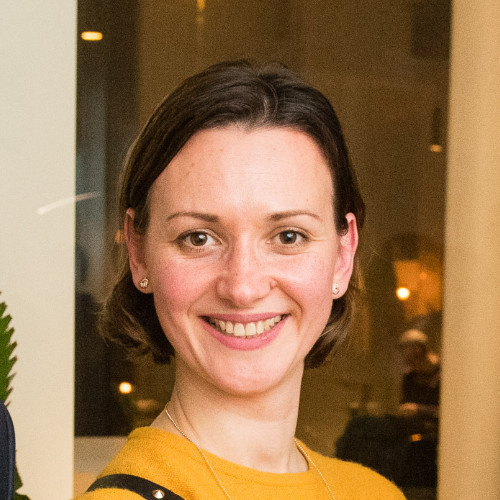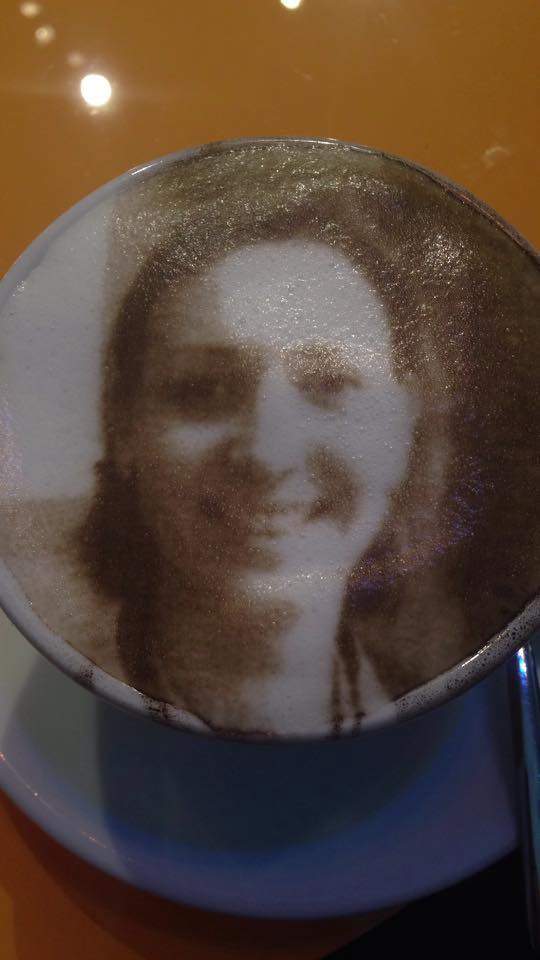
Insights & Opinions
The Banking Scene 2019: Exploring Banking for Humanity and Innovative Payments
Sat, 18 May 2019

While I certainly enjoy the larger, more international Fintech conferences, I am discovering that smaller, regional events have some unique benefits. With an audience of around 350, compared to the roughly 2500 at Paris FinTech Forum, The Banking Scene conference (TBSConf19), held in Brussels on 14 May, was a far more “local” event with a focus on the benelux market.
As a startup entrepreneur I enjoyed sharing a more intimate environment with like-minded business people. The third edition of TBSConf19 allowed participants to reconnect with their existing network and enlarge it. With the majority of participants being Belgian and the remainder made up of around 6% Netherlands and some international guests, there was a lot of mutual connection and understanding since these regions have very similar financial ecosystems.
Guests came from banks, various finance service providers or IT providers for the financial sector and it was refreshing to see a more even gender split with 65% male to 35% female participants. One couldn’t help but rejoice seeing a female included in every panel as well.
The Banking Scene Conference (#TBSConf19) impressed me with a highly professional level of organisation. Part of this was the subtle integration of technology into the event. Most of the sessions were interactive, allowing guests to respond to questions live and see and discuss the results on screen, which created a real sense of inclusion and took discussions to an elevated level.
Mastercard shared another innovative and fun touch of technology. Their coffee machine with 3D printer could print a portrait of your face on the milk foam of your coffee, based off of a photograph.

A few words on the agenda
Banking for humanity was at the heart of this event, with the aim of the conference being to elevate discussion around banks with a focus on possible future trends. This included a broad range of subjects — from the role of the bank in the customer-centric society to development of technologies to improve customer engagement to invisible payments.
The conference was split into two tracks : Banking for Humanity and Innovation in Payments ; with groups dividing into separate workshops to hear speakers mostly from Benelux, with some exceptions. Because my own project is in the payment domain I naturally joined the Innovation in Payments track, therefore I will share some of my reflections, observations by the experts and some of the trends I found most interesting.
While there were many fascinating speakers, I would have to highlight Chris Skinner as a personal favourite on the agenda. The international FinTech star and well-known public-speaker and author shared a fascinating story about the Ant Forest game/initiative launched by Alipay. The game is an attempt to influence consumer behaviour and motivate green consumption via the internet. It helps users to collect points which would then allow Alipay to plant a living tree. By the end of 2017, Ant Forest had 230 million users and planted 13,24 million real trees. Here we saw a real-life example of how financial companies can stay socially responsable, shape consumer behaviour and keep the customer inside the platform.
Innovation in payments
With technology speeding up our life and reinforcing different areas of it, innovation is mostly being driven by younger generations looking for change.
There are several way to look at innovations in payments, both of which demonstrate increased pressure on banks, their operations and an urgency to innovate. Instant, seamless and invisible payments are becoming the base expectation of customers, clients and society.
Innovation driven from the Customer Journey:
Millennials and generation Y are driving an urgency for all things, including payments, meaning that customer-centricity is shaping the future payment perspective.
Innovation driven from the Financial Ecosystem :
For a long time banks have been an island, who dictated the price, terms and conditions. Now the bank is under pressure to respond and cooperate with:
- Social changes like global expansion, fast currently transactions etc.
- Technology like blockchain, AI, ML, biometrics, robotics etc.
- BigTech like GAFAN, which starting to entering into finance ecosystem
- Regulatory and compliance, like PSD2, PSP players, SEPA scheme etc.
- New open banking platforms like N26, NeoBank, Starling bank etc
- Customer requirements like constant service, omni channels etc.
Instant payments
The benefits of instant payment for merchants, for B2B cash-flow and as an element of financial inclusion are well known and market research has shown that 50% of customers in Belgium and 68% in the Netherlands believe that it’s very important.
However not many of us are talking about the real challenges faced by banks, such as:
- Banking infrastructure that doesn’t allow for instant payment cross-border, only within countries.
- Reachability of customers, especially in the corporate world and the government, e.g. convincing a tax authority to accept an instant payment on Saturday, instead of a Monday.
- Financial capability of quick liquidity for corporate customers — there are still limitations on the amounts of payment with instant payment
As a product, instant payment doesn’t bring money in, but it is an enabling element for a strong customer base. In this case banks should be looking at value-added services to monetise their investment into instant payments. Another focus could be on developing ERP systems to search for a cross-border solution for instant payment. It would positively impact the business of online merchants, who have 23% of online cross-border sales in Europe.
Seamless transactions
Retailers and banks still struggle with how to provide a frictionless checkout and payment experience. There are many possibilities available, a few of which were discussed during The Banking Scene event.
Contactless payments with wearables, which could be both passive (rings, sunglasses, sneakers, bracelets, watch etc.) and active (credit card).
Right now contactless payments have a 60% adoption rate in the Netherland and only about 5% in Belgium. ABN AMRO in the Netherlands demonstrated how to increase market adoptions of this type of product by investing in an experiment where 500 customers were asked to use wearables provided by the bank for a 12 month period. In the end, 80% of the customers said that they preferred wearables to a regular bank card. The experiment created a ‘wow effect’ which in turn drove more customers to consider investing in products like fashionable jewelery containing a payment solution. At the same time merchants positively reacted to the contactless payment option, as it helped to reduce purchase time and lessens queues.
Implant payments with a chip in a hand.
Here, the adoption from the merchant’s side can be rather smooth, but customers are far more reluctant. This reluctance is driven by security concerns — personal traceability first of foremost and some ethical concerns. However, there is a digital startup in Stockholm which allows companies to offer employees a chip in their hand, which can function as a contactless credit card, key card and even travel card.
Invisible payments
Invisible payments take physical payment methods such as cash, debit and credit cards, and wearables completely out of the equation. Instead, payments are triggered automatically, without the customer having to do anything. An example is Uber — we store our financial credentials in the app and the payment for your journey is deducted “invisibly” upon arrival.
There are several use cases that demonstrate the primary trigger of invisible payments — Impatience!
- People hate to wait in a line in the fuel station
- In a restaurant, after dinner all you want is to leave and continue to enjoy your time, instead of waiting for a waiter to bring a machine for your card.
- If you buy your groceries on a Saturday afternoon, you could lose an extra 30–40 min waiting for the cashier.
- At a festival or concert you can get one bracelet which could function as a ticket, a payment solution and include some personal information.
For customers invisible payments deliver convenience, while for merchants it moves shopping into a more social experience with increased trust. Increased adoption would solve every use case and the technology is ready, but right now the consumer mindset is not.
The role of PSD2 in payments
The adoption of PSD2 regulation allowed a host of new players to enter the financial ecosystem, causing traditional banks to start losing money.
These payment service providers are challenging the status quo of banks, who should see it as an opportunity to cooperate with fintech startups. Banks have the best KYC knowledge and could use it to create new products and find new sources of revenue. But, instead of redefining their products, retail banks with traditional business models are trying to change their infrastructure, which takes a long time and requires a big investments.
Europe set a good example with PSD2 and other regions are now looking to our use case to see how to adjust it to their own regions. That being said, PSD2 is missing some standards like SEPA scheme, therefore PSD3 is only a matter of time.
Currently there are 6000+ banks in Europe and 9000+ banks in US. It’s likely that in the future these will be consolidated with no guarantee of the biggest banks maintaining their leading roles. Those who can adjust rapidly to the new reality, shape their product portfolio and impact the adoption in the market, will be the next Netflix.
It was clear from my perspective that Banking for Humanity and Innovation in Payments have many likely possible scenarios. The technology is being developed faster, businesses see the potential… now the only question is the speed of adoption.
The Banking Scene Conference is the type of the event where, by reflecting on the “local” market, we can see the gaps and identify the direction of the next big moves. It is a testimony to founder and event organiser Rik Coeckelbergs that this was a highly professional event, which offered the chance to have interesting conversations, informative content and quality networking.



